Kip Lynch ’22
Executive Editor
Trinity’s move from the site in downtown Hartford where the state capitol building currently stands also cemented its move away from classical architecture. Even during the ascendancy of the Colonial Revival movement between 1910 and 1930, Trinity would not construct a building in the Georgian or Federal styles.
When the admissions tours show visitors around campus, they tend to focus on the Long Walk and the Chapel, and for good reason. Most of the other buildings on Trinity’s campus are, for lack of a better word, ugly, or at least lack the “Old World” grandeur that accompanied much of the campus of year’s past. What many students and perhaps even alumni do not know is the number of beautiful buildings that have been swept into the ash heap of history. Below are a few of the unfortunate buildings that no longer stand today.
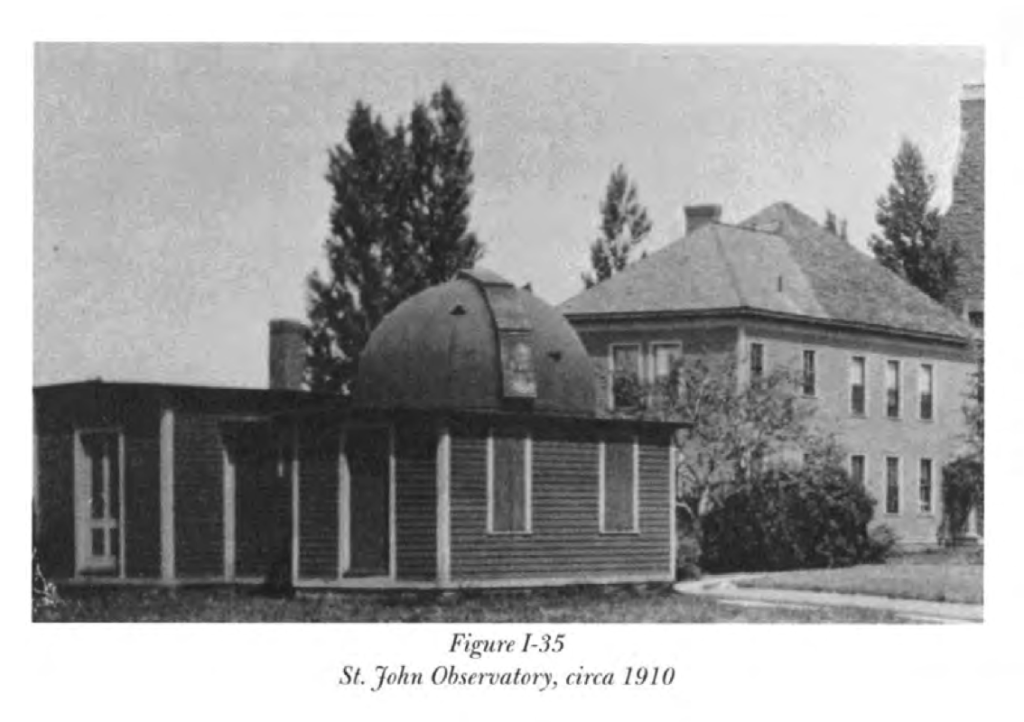
St. John Observatory: Glenn Weaver’s History of Trinity College only provides a brief insight into the observatory, describing how it was constructed in the late 1800s on the south side of campus using the funds of E. Winslow Wilson, who had donated $2,500 in 1864. It is unclear when it was demolished.
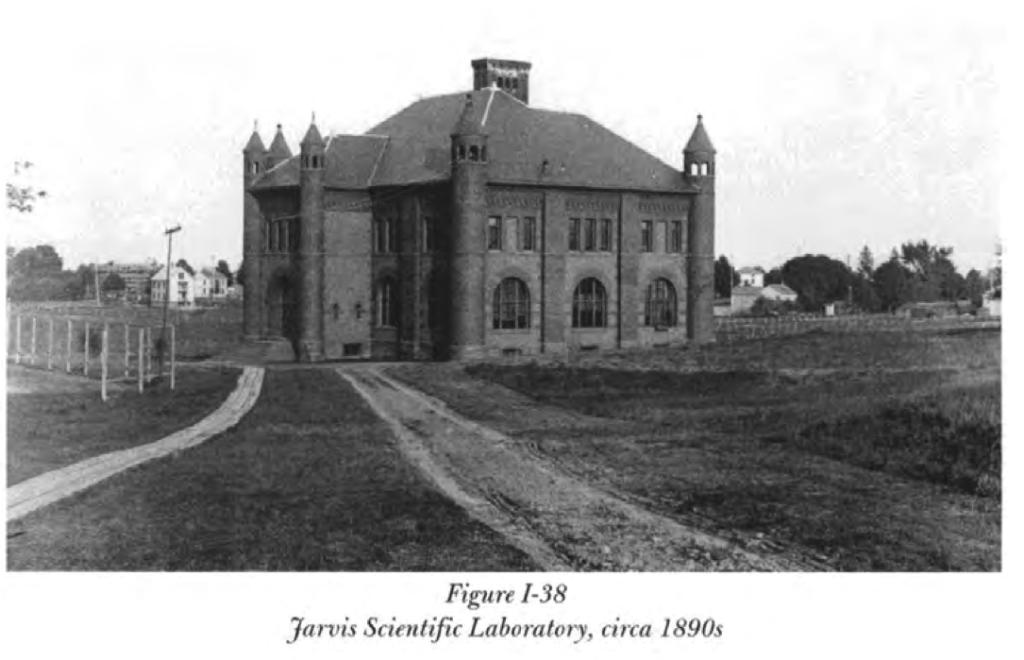
Jarvis Physical Laboratory: This building formerly stood around the current location of Hallden Hall, which was once known as the Hallden Engineering Laboratory. Weaver describes how the building, constructed in 1888, was “erected largely upon the insistence of an interested party – in this case, Professor Henry Carrington Bolton, Professor Chemistry and Natural Science since 1877.” Built due to the inadequacies of Seabury Hall, it is unclear when it was demolished. It’s also unclear whether the laboratory was named, like Jarvis Hall on the Long Walk, after the Rt. Rev. Abraham Jarvis, a Yale graduate and Loyalist who served as the second Bishop of the Episcopal Diocese of Connecticut.
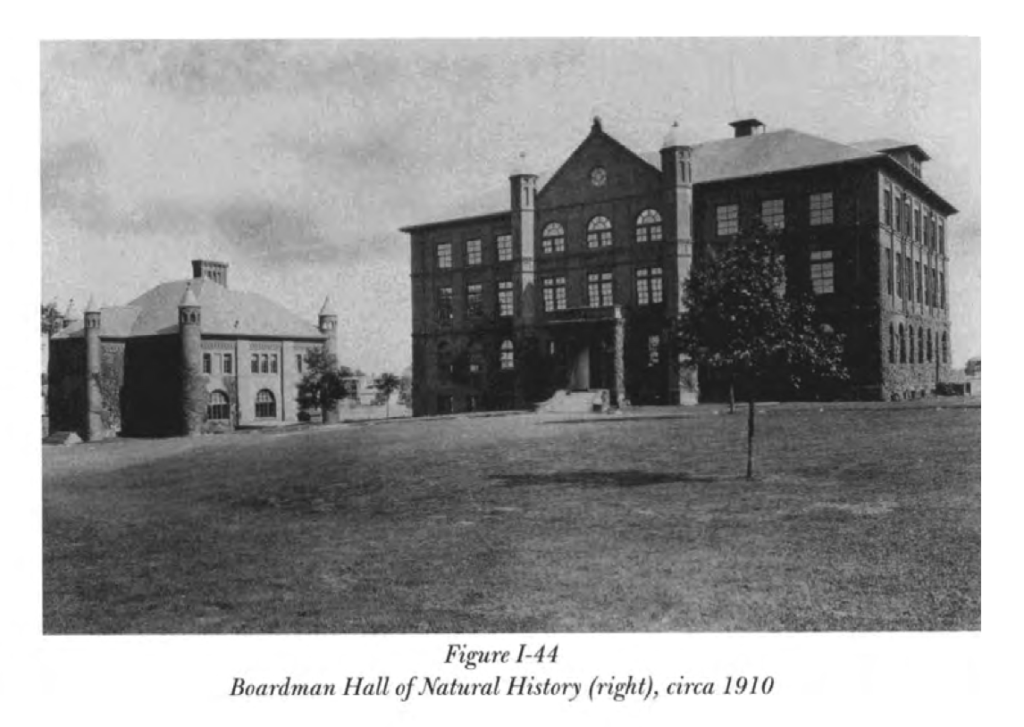
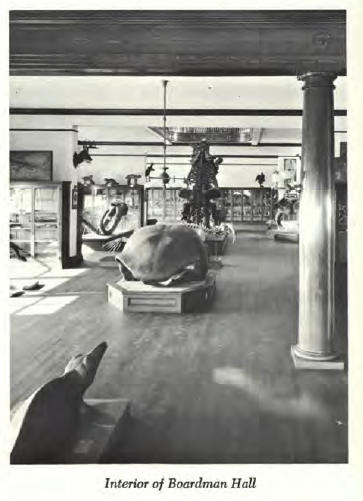
Boardman Hall: The Boardman Hall of Natural History was completed in July 1900 and named in recognition of “a gift to the College from the widow of Trustee William Whiting Boardman.” Small donations totaled around $17,000 while Trustee J. Pierpont Morgan contributed $10,000 towards the effort. Weaver remarks that “It was doubtless J. Pierpont Morgan’s gift which made possible the completion of Boardman Hall, and it was this gift which caused Morgan suddenly to become interested in the College and especially in the Department of Biology.” His position on the Board of Trustees was largely due to his father Junius Morgan, who had donated funds for the construction of Alumni Hall. Prior to his contribution towards Boardman Hall, Morgan “never attended the Trustees’ meetings and, despite his great wealth, he had never contributed to the capital funds of the College. Even his gift toward Boardman Hall had been made with some reluctance.” Built next to the Jarvis Laboratory, it is also unclear when Boardman Hall was demolished.
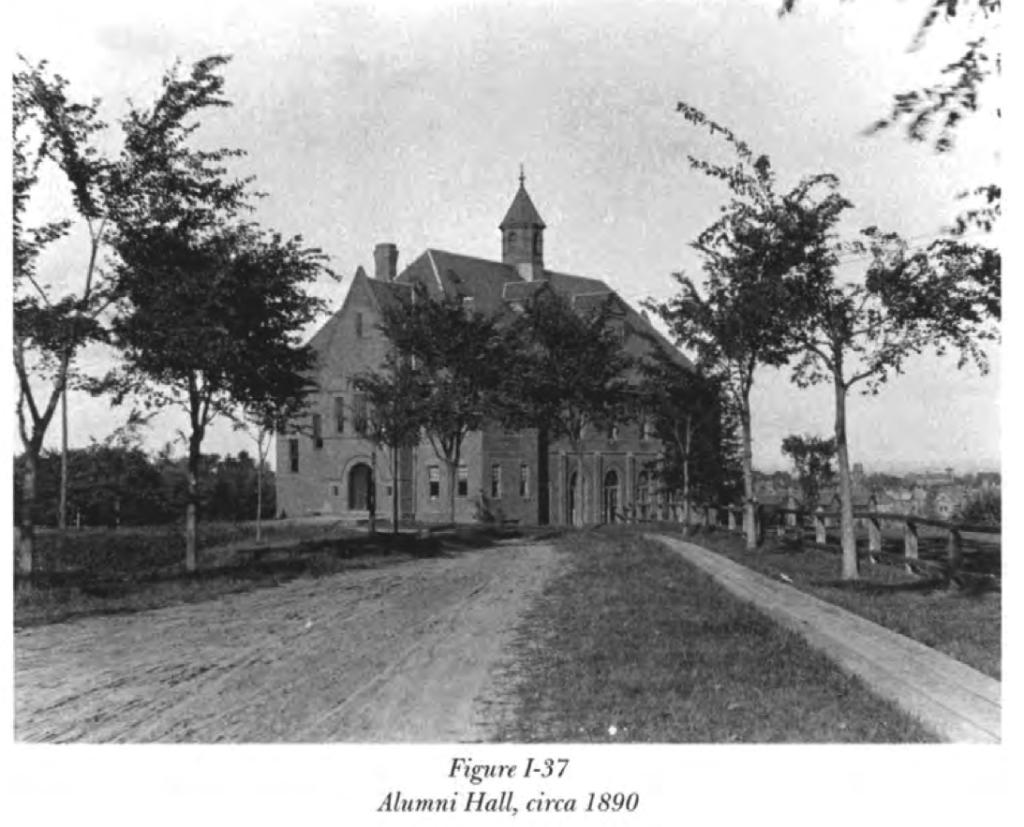
Alumni Hall: Located where the Admissions Building currently stands, Alumni Hall was built to replace the old gymnasium. According to Weaver, the old gymnasium “had been removed to the new campus from its former location” and “had never been really satisfactory. It was small, unsightly, unheated, and poorly equipped.” In 1883, the Trinity College Athletic Association wrote a letter to alumni and “presented the case for more adequate facilities for athletics at the College. No pains were spared in pointing out the old gymnasium’s deficiencies, and a not-too-well-concealed hint was offered that a new gymnasium would be a most useful addition to the college facilities.” With donations from “Junius S. Morgan, Esq., Robert H. Coleman ’77, and others, the gymnasium, elaborately furnished with up-to-date athletic facilities, was dedicated as Alumni Hall in 1887.” However, it burned down in 1967. The Trinity Alumni Magazine reported that the fire began on the first floor and, although it was doused within two hours, all that was left was a “mass of charred and water-soaked rubble. Nothing was salvageable.”
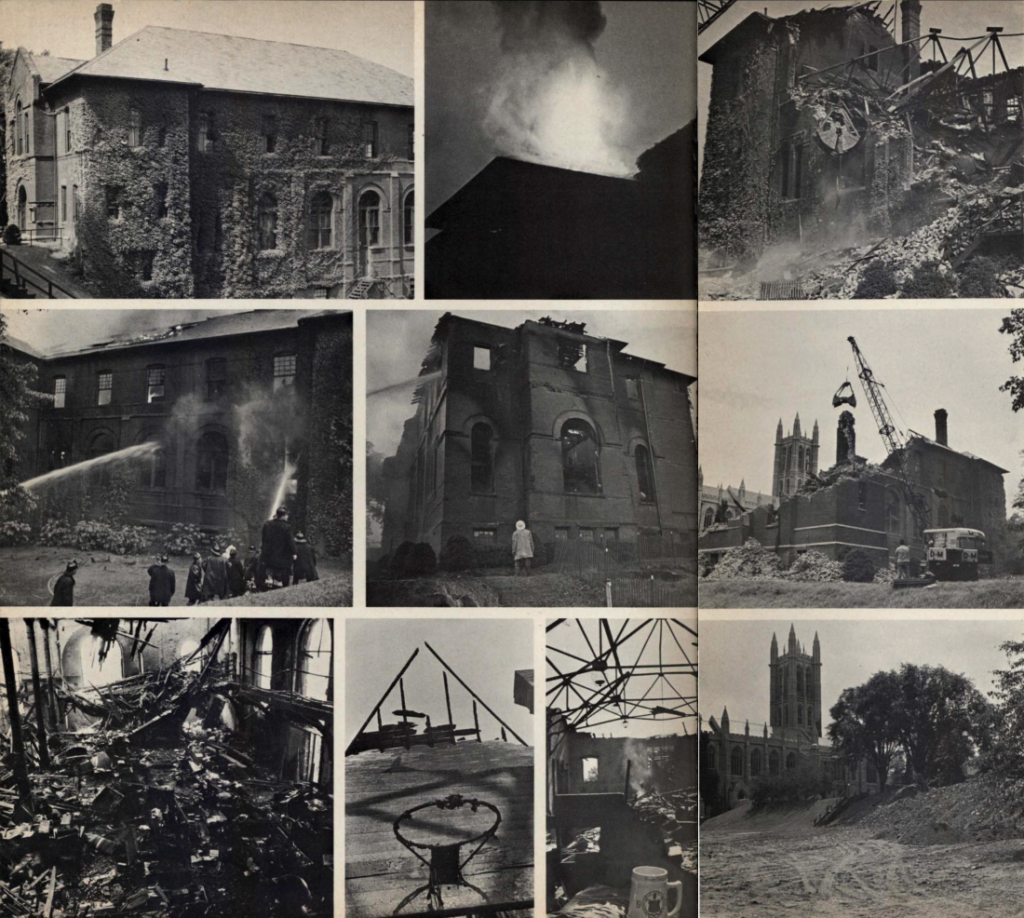






+ There are no comments
Add yours